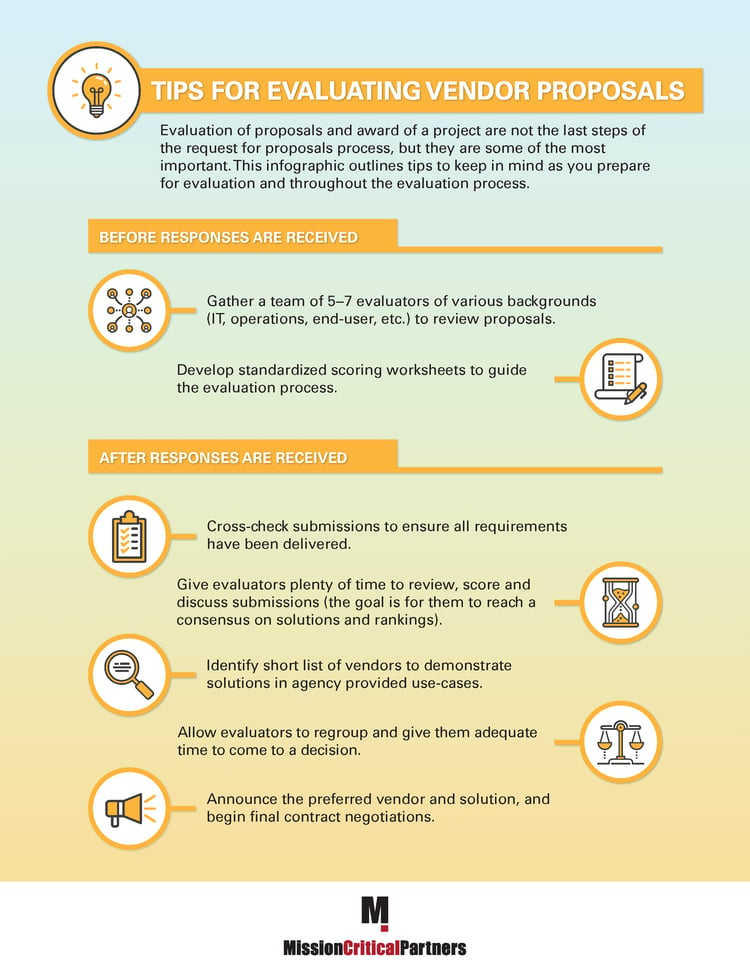Infographic: You've Been Hacked
Are you ready to respond to a cyberattack? They are likely to happen and your response plan will have direct bearing on your ability to mitigate such attacks, and on your cybersecurity posture as a whole.
Are you ready to respond to a cyberattack? They are likely to happen and your response plan will have direct bearing on your ability to mitigate such attacks, and on your cybersecurity posture as a whole.
Benefits gained from a cloud-based solution are considerable compared with traditional implementations methods. Not only are more state and federal public safety agencies moving the cloud, but cloud-based solutions also are being leveraged by mission-critical entities such as the
Evaluation of proposals and award of a project are not the last steps of the request for proposals process, but they are some of the most important. This infographic outlines tips to keep in mind as you prepare for evaluation and throughout the evaluation process.

It used to be much easier for public safety agencies to manage their vendors compared to a decade ago. At that time they were simple and easy to understand and they generally only involved the radio, computer-aided dispatch (CAD) and 911 call-handling system providers.
A Pennsylvania statewide EOC agency suffered from a lack of space at an aging facility that prevented them to introduce new technology and replace antiquated systems.
MCP and its partner, SCHRADERGROUP, worked together to help PEMA build a new state-of-the-art facility and ancillary building that opened in July 2016.
The new facility is considered a crown jewel that dramatically enhances PEMA's operational and administrative capabilities
An Emergency Operations Center (EOC) facility located in Harrisburg, PA is home to the Pennsylvania Emergency Management Agency (PEMA), a cabinet-level agency that is tasked with coordinating prevention, preparedness, response and recovery activities related to natural and man-made emergencies in the Commonwealth of Pennsylvania. Lack of space and age prevented them from serving the needs of a statewide EOC and limited their ability to introduce new technology and replace aging systems.
Looking to lower expenses without sacrificing support, Cobb County, Georgia, began exploring the possibilities of renegotiating their Project 25 (P25) land mobile radio system maintenance agreement with the vendor. They wanted to better understand the services, terms and conditions, and the associated costs included with the maintenance contract. With limited knowledge of how their fees compared to similar-sized systems in the public safety sector, they sought assurance they were paying a fair price for the support provided.
How can we support your mission? From design and procurement to building and management, our national team of experts is here to help…because the mission matters.
Click the button below to sign up for our newsletter.
SIGN UP